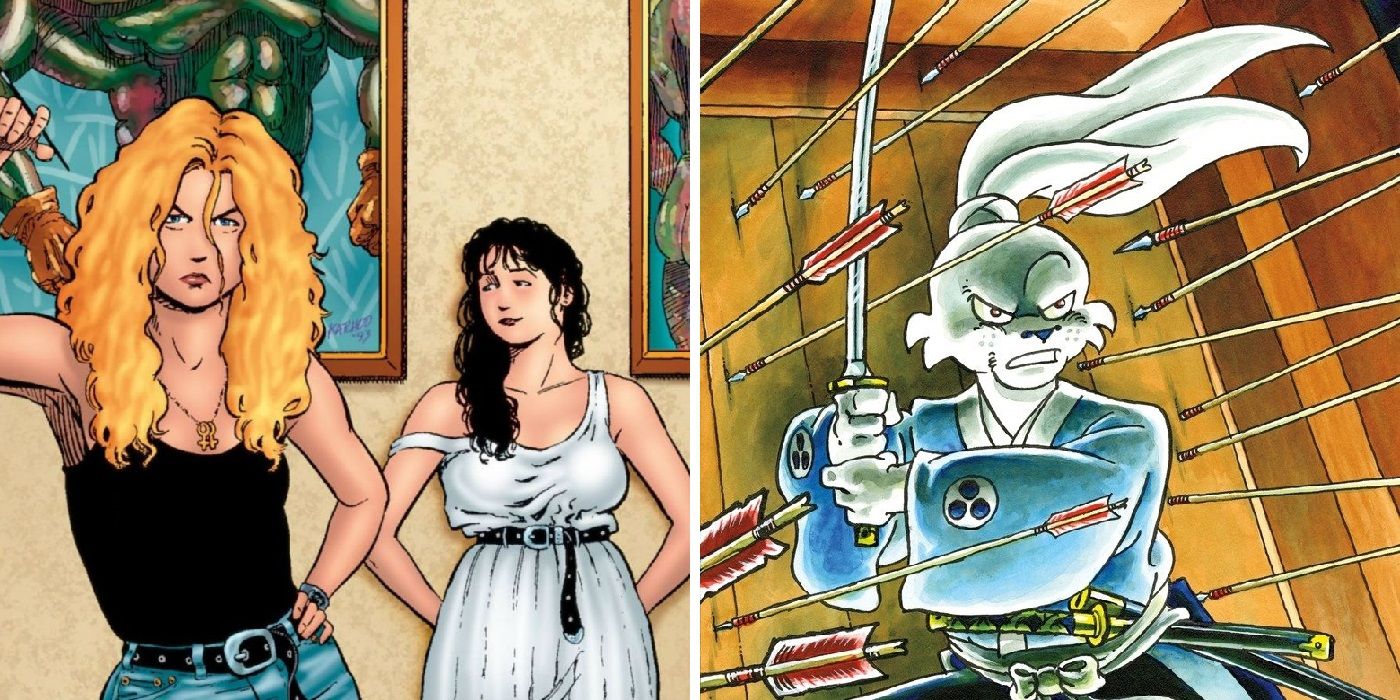
Effective Ways to Explore Flex Comics in 2025
As the comic industry evolves, flex comics are becoming a significant trend in the vibrant world of comics fandom. In 2025, these innovative comic forms offer a range of flexibilities in storytelling, artistic styles, and distribution methods. Whether you're a seasoned comic book collector or a casual reader, understanding the latest trends will enhance your appreciation for graphic novels and various comic book series. This article will explore effective ways to dive into the flex comic universe, incorporating aspects like comic character design, narrative techniques, and community engagement.
The growing popularity of indie comics and webcomics means that new voices and styles are constantly emerging. Additionally, with the rise of digital comics, the accessibility and variety of content continue to expand, catering to diverse readership demographics. Here, we'll provide insights into how to explore these comic innovations, engage with comic book artists, and leverage the latest technologies shaping the industry. Prepare to discover a wealth of resources and communities centered around comic illustrations and narrative art!
Understanding the Flexibility in Comics
The term "flex comics" refers to a new approach in comic book storytelling techniques that emphasizes flexibility in various aspects such as format, distribution, and engagement. This trend allows for a more fluid interpretation of traditional comic book genres, enabling creators to experiment with storytelling elements, from character-driven stories to dynamic panel layouts.
One influential aspect is the narrative structure. Unlike conventional comics that follow a strict format, flex comics allow for unique layouts, varying sizes, and even interactive elements. This flexibility can lead to richer engagement with the audience, making them an essential part of the storytelling process. For instance, creators might choose non-linear storytelling to create suspense, offering readers multiple paths to explore within the narrative.
This innovative approach is evident in emerging platforms that cater to flex comic creators, enabling artists to publish their work directly to readers, often through crowdfunding for comics and other digital channels. Moreover, the rising trend of comic-related merchandise and online fan engagement fosters a more immersive comic experience. This evolution not only reflects a shift in how comics are produced but also in how audiences interact with these narratives.
Engaging with Comic Book Communities
Engaging with comic book communities is a pivotal aspect of exploring flex comics. The rise of social media platforms, dedicated forums, and local comic book stores creates opportunities for fans to connect, share, and discover new content. Comic book conventions also play a significant role in fostering community engagement and showcasing independent talent.
Participating in these events offers fans a chance to meet their favorite comic book artists and engage in discussions about current trends, comic book culture, and even future projects. Furthermore, many comic conventions feature workshops that delve into comic art education, serving as platforms for aspiring artists to learn from industry veterans.
Community engagement also extends to online platforms focused on comic book analysis. Readers can delve deeper into the meanings behind their favorite stories, participate in discussions about character arcs, and explore the evolution of comic adaptations in films. This robust engagement results in a colorful tapestry of shared experiences and insights within the comic book fandoms.
Embracing Digital Innovations in Comics
The digital transformation within the comic industry is a game changer, particularly for flex comics. With the introduction of various online comic platforms, readers now have access to a plethora of stories and graphic styles from around the globe. Digital formats facilitate the reading experience by enhancing accessibility and allowing for experimental formats that challenge traditional comic norms.
Additionally, innovations such as webtoon formats and interactive comics have gained prominence, allowing creators to engage readers in new ways. These formats often promote episodic storytelling, where readers anticipate new updates regularly, thereby building a loyal following. This model allows indie comics to thrive, as smaller creators can reach wider audiences without the barriers of traditional publishing.
The ability to utilize multimedia elements, such as animations and sound effects, further enriches the storytelling experience in digital comics. As technology evolves, so does the potential for graphic storytelling in ways that were previously unimaginable. This adaptability equips creators with the tools to push boundaries within narrative complexity and visual literacy, engaging readers in dynamic narratives.
Exploring Indie Comics and Emerging Artists
Indie comics are at the forefront of the flex comics movement, bringing fresh perspectives and diverse representation to the comic book landscape. These creators often explore themes and stories that may be overlooked by larger publishers, allowing for a more inclusive environment where various voices can flourish. Leveraging platforms like crowdfunding and social media, indie artists are redefining the comic book publishing process, building their own audiences, and often engaging them directly in the creative process.
Emerging artists are using this flexibility to explore narrative arcs that resonate deeply with audiences. They tackle a variety of genres, from fantasy comics to horror comics, providing ample options for readers seeking various storytelling styles. By participating in local art shows and comic markets, these artists share their works directly with audiences, fostering a stronger connection between creators and fans.
This empowerment has also led to greater accessibility in the industry, as independent creators often share their techniques and workflows through workshops and online courses, allowing others to break into the field. By participating in or supporting these indie comic circuits, readers not only discover new talents but contribute to a more vibrant cultural landscape within the comics community.
Panel Layout Design and Visual Storytelling
Panel layout design plays a crucial role in enhancing the storytelling experience within flex comics. The arrangement of panels can dictate the pacing, tension, and emotional impact of the narrative. Flexible layouts enable artists to break from traditional grid patterns, leading to innovative approaches to storytelling.
Emerging trends highlight the use of unconventional shapes and sizes of panels, allowing creators to visually represent the emotional journey of characters. For instance, a single large panel might depict a significant moment, while smaller panels can illustrate rapid action or dialogue, creating a rhythmic flow throughout the comic. These variations in visual narrative not only capture the reader's attention but also encourage deeper engagement with the story.
Moreover, artists are increasingly exploring text-to-image generation techniques to enhance their visual storytelling. This method allows creators to play with the relationship between text and visuals, leading to unique interpretations of character experiences and themes. As digital innovations continue to influence comic layouts, the potential for novel approaches in comic art styles expands, captivating readers' imaginations.

Future Trends in Comic Book Publishing
As we look toward the future of flex comics, several trends stand out that will likely shape the landscape of comic book publishing. One significant trend is the integration of augmented reality into comics, allowing readers to interact with characters and storylines in immersive ways. By using mobile devices, fans can access exclusive content, additional character insights, and behind-the-scenes creations that enrich their reading experience.
Furthermore, the concept of transmedia storytelling is gaining traction, where narratives are spread across various platforms, including podcasts and animation, expanding the universe of beloved comic book characters. This approach not only broadens the readership but also fosters community engagement as fans discuss theories and interpretations across different media forms.
Additionally, trends in graphic novel adaptations for television and film are on the rise, showcasing the potential for comics to reach new audiences. As more adaptations emerge, there’ll be a deeper appreciation for comic storytelling techniques and the understanding of their cultural impact. All these advancements offer a hint of the exciting developments awaiting readers as they navigate the evolving world of comics.

Connecting Through Comic Book Conventions
Comic book conventions provide an excellent opportunity for fans to immerse themselves in the expansive universe of flex comics. These events feature panels and workshops where creators discuss their processes and strategies for storytelling in comics. For instance, aspiring artists have the chance to learn about comic book character design directly from professionals in the field.
Moreover, conventions offer a space for fans to connect with comic book publishers and discover new releases, whether they're from established names or independent creators. Attendees can engage with new merchandise, including collectible comics and unique art prints, expanding their home collections. This interaction fosters a sense of belonging within the comics fandoms, where individuals can share their passions and discover fellow enthusiasts.
In addition to panels and workshops, many conventions feature fan artexperimental comic forms and engaging storytelling styles, these events highlight the engaged and vibrant nature of the comic community, thus reinforcing the connections between creators and audiences.
Q&A Section: Common Questions About Flex Comics
What distinguishes flex comics from traditional comics?
Flex comics prioritize adaptability in format, storytelling techniques, and artist engagement. They often feature non-linear narratives and experimental layouts that deviate from established comic norms, creating a more immersive experience for readers.
How can I get involved in the indie comic scene?
Getting involved in the indie scene can be as simple as attending local comic events, participating in online forums, and supporting indie creators through crowdfunding platforms. Engaging with social media can also help connect you with emerging artists and their works.
What should I consider when exploring new comic book conventions?
When exploring conventions, research exhibitors, artists, and scheduled panels that resonate with your interests. Look for opportunities to attend workshops or networking events to meet like-minded enthusiasts and gain insights into the industry.
What role does digital technology play in contemporary comics?
Digital technology has revolutionized how comics are created and consumed, enabling innovative storytelling formats, interactive elements, and wider accessibility. Online platforms now allow creators to reach global audiences, enhancing the comic landscape significantly.
How do I stay updated on the latest comic book trends?
Follow industry news, join comic book communities online, and subscribe to newsletters from comic publishers to stay informed on the latest trends, releases, and events throughout the comic industry.
With these insights and trends, the exploration of flex comics in 2025 offers an exciting opportunity to engage with the evolving world of comic illustrations and narrative forms. Embrace this journey and connect with the vibrant communities surrounding comic book culture.
Its part of generated content. Can i generate another part?